
Paramaribo is the capital and largest city of Suriname, located on the banks of the Suriname River in the Paramaribo District. Paramaribo has a population of roughly 241,000 people, almost half of Suriname's population. The historic inner city of Paramaribo has been a UNESCO World Heritage Site since 2002.
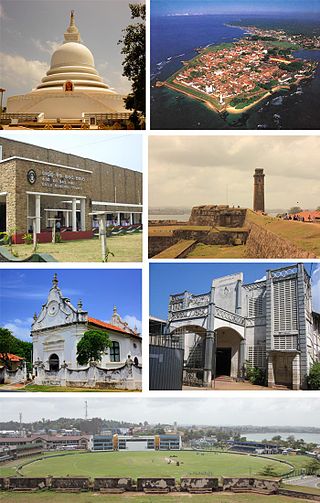
Galle is a major city in Sri Lanka, situated on the southwestern tip, 119 km (74 mi) from Colombo. Galle is the provincial capital and largest city of Southern Province, Sri Lanka and is the capital of Galle District.

The Dutch colonial empire comprised the overseas territories and trading posts controlled and administered by Dutch chartered companies—mainly the Dutch East India Company and the Dutch West India Company—and subsequently by the Dutch Republic (1581–1795), and by the modern Kingdom of the Netherlands after 1815. It was initially a trade-based system which derived most of its influence from merchant enterprise and from Dutch control of international maritime shipping routes through strategically placed outposts, rather than from expansive territorial ventures. The Dutch were among the earliest empire-builders of Europe, following Spain and Portugal and one of the wealthiest nations of that time.
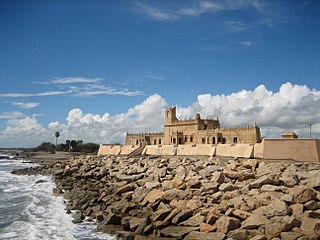
Colonial architecture is a hybrid architectural style that arose as colonists combined architectural styles from their country of origin with design characteristics of the settled country. Colonists frequently built houses and buildings in a style that was familiar to them but with local characteristics more suited to their new climate.

Spanish colonial architecture represents Spanish colonial influence on New World and East Indies' cities and towns, and it is still seen in the architecture as well as in the city planning aspects of conserved present-day cities. These two visible aspects of the city are connected and complementary. The 16th-century Laws of the Indies included provisions for the layout of new colonial settlements in the Americas and elsewhere.

Matara is a major city in Sri Lanka, on the southern coast of Southern Province. It is the second largest city in Southern Province. It is 160 km (99 mi) from Colombo. It is a major commercial hub, and it is the administrative capital and largest city of Matara District.
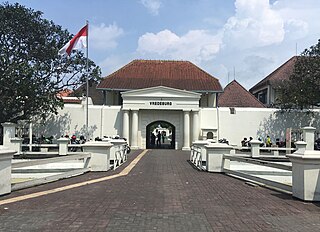
Fort Vredeburg Museum was a former colonial fortress located in the city of Yogyakarta, Special Region of Yogyakarta, Indonesia. The military complex has been converted into a museum of the Indonesian independence struggle which was opened in 1992. It is located in front of Gedung Agung and near the Kraton Yogyakarta.

Cape Dutch architecture is an architectural style found mostly in the Western Cape of South Africa, but modern examples of the style have also been exported as far afield as Western Australia and New Zealand, typically on wine estates. The style was prominent in the early days of the Cape Colony, and the name derives from the initial settlers of the Cape being primarily Dutch. The style has roots in medieval Netherlands, Germany, France and Indonesia.
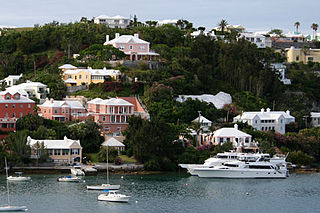
The architecture of Bermuda has developed over the past four centuries. The archipelago's isolation, environment, climate, and scarce resources have been key driving points, though inspiration from Europe, the Caribbean and the Americas is evident. Distinctive elements appeared with initial settlement in the early 17th century, and by the second half of that century features that remain common today began to appear.

The architecture of Indonesia reflects the diversity of cultural, historical, and geographic influences that have shaped Indonesia as a whole. Invaders, colonizers, missionaries, merchants, and traders brought cultural changes that had a profound effect on building styles and techniques.
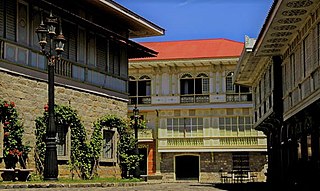
The architecture of the Philippines reflects the historical and cultural traditions in the country. Most prominent historic structures in the archipelago are influenced by Austronesian, American architectures.

The Galle Fort Hotel in Sri Lanka is a 12-room boutique hotel, situated inside Galle Fort, Galle. The building was originally constructed in the 17th century, during the Dutch colonial period, as a private dwelling.

Charles Prosper Wolff Schoemaker was a Dutch architect who designed several distinguished Art Deco buildings in Bandung, Indonesia, including the Villa Isola and Hotel Preanger. He has been described as "the Frank Lloyd Wright of Indonesia," and Wright had a considerable influence on Schoemaker's modernist designs. Although he was primarily known as an architect, he was also a painter and sculptor.

A landhuis is a Dutch colonial country house, often the administrative heart of a particuliere land or private domain in the Dutch East Indies, now Indonesia. Many country houses were built by the Dutch in other colonial settlements, such as Galle, Cape Town and Curaçao, but none as extensively or elaborately as in the Residency of Batavia. Much of Batavia's reputation as "Queen of the East" rested on the grandeur of these 18th-century mansions.

The colonial architecture of Indonesia refers to the buildings that were created across Indonesia during the Dutch colonial period, during that time, this region was known as the Dutch East Indies. These types of colonial era structures are more prevalent in Java and Sumatra, as those islands were considered more economically significant during the Dutch imperial period. As a result of this, there is a large number of well preserved colonial era buildings that are still densely concentrated within Indonesian cities in Java and Sumatra to this day.
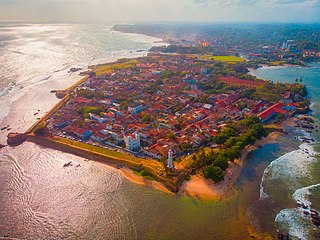
Galle Fort, in the Bay of Galle on the southwest coast of Sri Lanka, was built first in 1588 by the Portuguese, then extensively fortified by the Dutch during the 17th century from 1649 onwards. It is a historical, archaeological and architectural heritage monument, which even after more than 432 years maintains a polished appearance, due to extensive reconstruction work done by the Archaeological Department of Sri Lanka.
Frans Johan Louwrens Ghijsels was a Dutch architect and urban planner who worked in the Netherlands and the Dutch Indies. Ghijsels was the founder of AIA, the biggest architecture consultant in the Dutch Indies. He was one of the instrumental architects in developing a modern style characteristic of the Dutch Indies.
The Matara Fort was built in 1560 by the Portuguese and was substantially re-built by the Dutch in 1640, following the capture of Galle. The fort, which consists of a large stone rampart, occupies the promontory, which separates the Niwala Ganga (River) lagoon and the ocean.

Indies Empire style is an architectural style that flourished in the colonial Dutch East Indies between the middle of the 18th century and the end of the 19th century. The style is an imitation of neoclassical Empire Style which was popular in mid-19th-century France. Conformed to the tropical setting of Indonesia, the style became known in the Dutch East Indies as Indies Empire style.
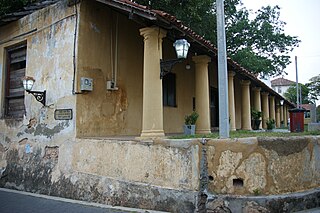
The Galle Fort Post Office is the post office in Galle Fort, Sri Lanka.
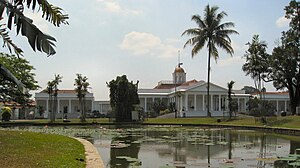



























![boo[?]gaatttti.jpg](http://upload.wikimedia.org/wikipedia/commons/thumb/1/15/%E0%B4%AC%E0%B5%8B%E0%B5%BE%E0%B4%97%E0%B4%BE%E0%B4%9F%E0%B5%8D%E0%B4%9F%E0%B4%BF.jpg/120px-%E0%B4%AC%E0%B5%8B%E0%B5%BE%E0%B4%97%E0%B4%BE%E0%B4%9F%E0%B5%8D%E0%B4%9F%E0%B4%BF.jpg)









































